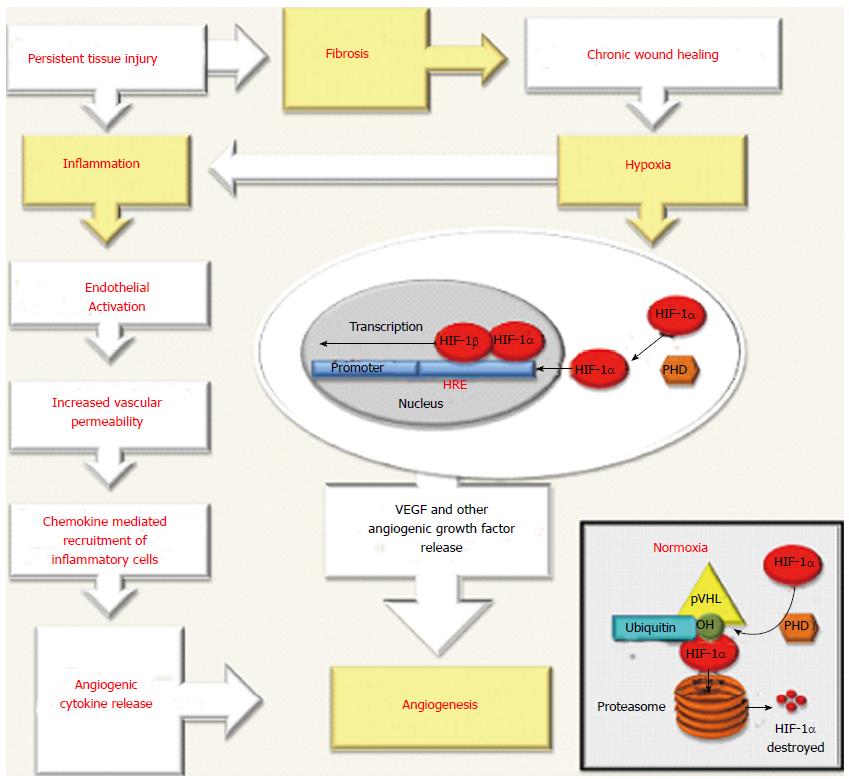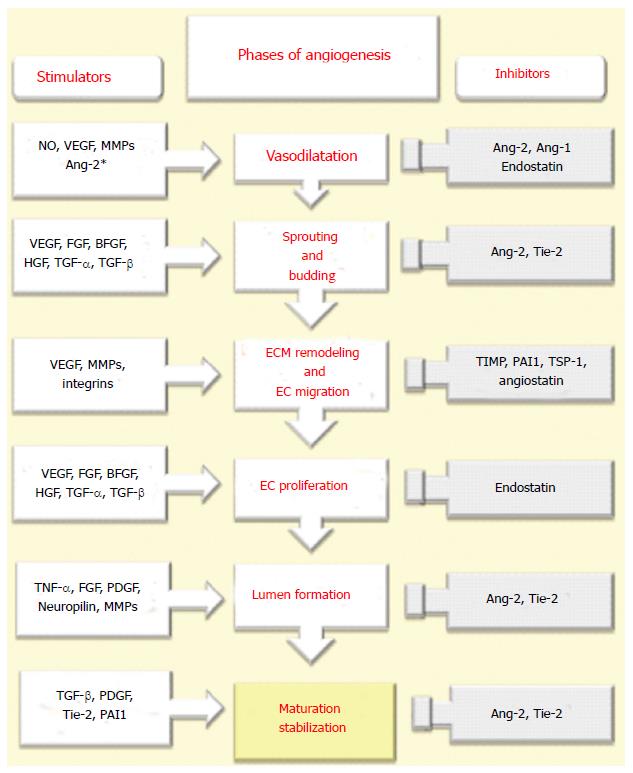Copyright
©The Author(s) 2015.
World J Hepatol. Mar 27, 2015; 7(3): 377-391
Published online Mar 27, 2015. doi: 10.4254/wjh.v7.i3.377
Published online Mar 27, 2015. doi: 10.4254/wjh.v7.i3.377
Figure 1 Link between angiogenesis, inflammation and fibrosis.
Hypoxia plays a crucial role in the the activation of HIF-1. HIF-1α: Hypoxia inducible factor 1α; HIF-1β: Hypoxia inducible factor 1β; HRE: Hypoxia responsive elements; VHL: Von Hippel Lindau protein; PDH: Prolyl hydroxylated domain; VEGF: Vascular endothelial growth factor.
Figure 2 Phases of angiogenesis and the agents involved.
NO: Nitric oxyde; VEGF:Vascular endothelial growth factor; MMPs: Matrix metalloproteinases; Ang-2: Angiopoietin 2; FGF: Fibroblast growth factor; BFGF: Basic fibroblast growth factor; HGF: Hepatocyte growth factor; TGF-α: Transforming growth factor-α; TGF-β: Transforming growth factor-β; TNF-α: Tumor necrosis factor-α; PDGF: Platelet derived growth factor; PAI: Plasminogen activator inhibitor; Ang-1: Angiopoietin-1; TIMP: Tissue inhibitor of metalloproteinase; TSP-1: Thrombospondin-1.
Figure 3 Structure and function of endothelium.
In endothelial cells an increase in Tie-2 signaling via the Ang-1 receptor initiates phosphorylation of Akt, which in turn phosphorylates eNOS and survivin. Enzymatic activity of eNOS is also regulated by calcium, calmodulin, NADPH, and BH4. The conversion of L-arginine to NO by eNOS leads to the cyclic-GMP-mediated relaxation of smooth muscle cells. Ang: Angiopoietin; BH4: 5,6,7,8 tetrahydrobiopterine; eNOS: Endothelial nitric oxide synthase; FN: Fibronectin; NO: Nitric oxide; PECAM-1: Platelet/endothelial cell adhesion molecule 1; VN: Vitronectin; Ang-1: Angiopoietin-1; Ang-2: Angiopoietin-2; VEGF: Vascular endothelial growth factor.
- Citation: Elpek G&. Angiogenesis and liver fibrosis. World J Hepatol 2015; 7(3): 377-391
- URL: https://www.wjgnet.com/1948-5182/full/v7/i3/377.htm
- DOI: https://dx.doi.org/10.4254/wjh.v7.i3.377











